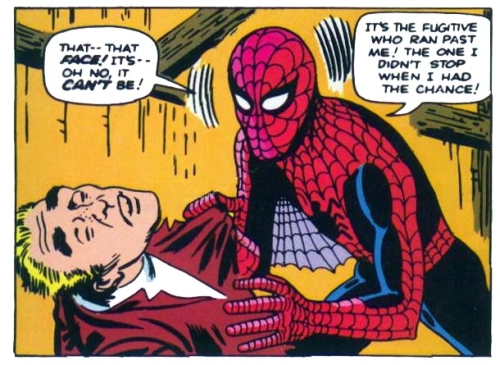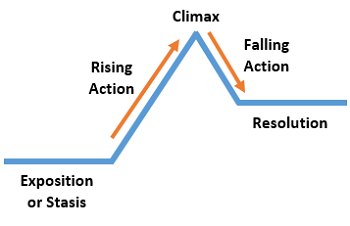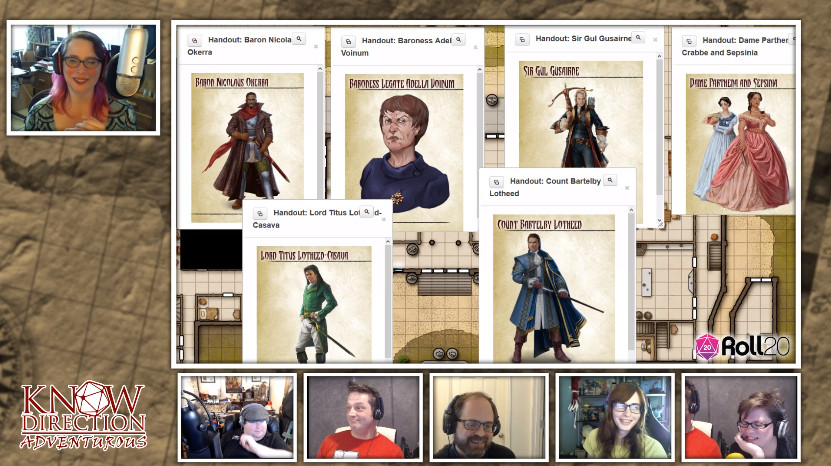There’s been a lot of buzz around the network about backstories lately, between Know Direction 196’s proposed topic and Andrew’s Burst of Insight companion piece to it. Today’s blog is a make-up of sorts for Know Direction 196. While the episode was informative and, frankly, cathartic, it’s not what it was designed to be. Unfortunately, the lead-in news item set a tone that turned into a rabbit hole when we got into my feelings on backstories, and we never got to the original intent of the discussion: ways to bring a character to life.
BACKSTORY
The fleshed out origin of your character, usually following a three act structure of status quo => inciting incident => stuff happens => turning point => resolution. Not everyone uses these terms, but they’re my favourite.
Peter Parker was a poor, unpopular high school kid (status quo), when he was bit by a radioactive spider that gave him super powers (inciting incident). He selfishly used these powers for fame and fortune (stuff happens). That selfishness lead to the death of his beloved uncle (climax). He learned that with great power there must also come great responsibility, and he set himself on a path of doing good (resolution).
What’s important there is that the resolution is not the end of the story. It’s the start. A backstory establishes a new status quo, and the campaign represents a larger inciting leading to bigger stuff happening.
“But Ryan,” you might be saying. “You hate backstories with the fire of a thousand suns. It all started in your youth, when a backstory plundered your village…”
Backstory is to character creation as chocolate is to dessert. It’s so universally liked that it’s often the only item on the menu. If someone doesn’t like chocolate, it is so anomalous it can be inflated in other people’s mind as hate. You’d have to hate chocolate to not like it, right? So when someone wants dessert and doesn’t like chocolate, the waiter is all “Uh…” Or worse, “dessert is mandatory, so eat the chocolate.”
In case it wasn’t clear in the episode, I am not against backstories. Yes, the characters I’ve played with elaborate backstories have without exception made my turns slower, my roleplaying less engaged, and the experience less entertaining. But I am very much pro the goal of mandatory backstories -deeper roleplaying and more complex characters. What I am anti is mandatory.
Different players play in different ways and for different reasons. What works for many and even most doesn’t necessarily work for all. If you want to encourage deeper roleplaying and more complex characters, by all means, ask your players how they feel about writing backstories. Let the players who are gung ho about backstories use that tool. For the players who are ho-hum, here are some other suggestions.
CONCEPT
Concept is backstories for players who need inspiration and not details. It’s a chocolate drizzle on a cheesecake instead of a chocolate cheesecake.
Take the Spider-Man backstory and reduce it to fewer points or vaguer connections. When a nerd with problems got powers, he used them to try to solve his problems only to realize his problems are bigger than him. It’s not the origin of Spider-Man as much as it is the idea of Spider-Man.
What’s important about both backstories and concepts is that they inform how the character reacts. It’s just more obvious in a concept because the format is shorter and so the content needs to be concentrated.
SNAPSHOT
You know how most movie trailers are a series of scenes, but every now and then you get one that is one single scene from early in the movie that establishes everything you need to know about the movie? That’s a snapshot. If concept is backstory zoomed out, snapshot is backstory zoomed in.
Former co-host of the Private Sanctuary, Matt Belanger, recently reached out to me asking for help with a cohort’s backstory in a campaign he’s playing in. His party rescued a group of prisoners, and he wanted to take a conjuror from the group as a cohort. However, it was already established that the prisoners’ gear was unaccounted for. Matt wanted a quick but fun reason to get the conjurer his gear so his cohort was reading to go. He tried a few rules solutions, like the Pathfinder pouch, but found flaws with each idea he came up with. So he turned to me for a creative solution, of which I came up with two:
OPTION 1: Bad at Magic
The conjurer leads you to a clearing where a seemingly random rock formation is actually a topographical map of a nearby area. He asks you to remember a weed and the rock with the white stripe, then leads you six hundred yards due South. There he tells you to stop and pretend you are the weed and asks where the white striped rock would be. Based on your estimate, he gets on all fours and digs until he finds a leather bag containing all his goods.
When asked why he didn’t use magic to make almost all of that easier he said “Shoot, I always forget I’m a powerful magician.”OPTION 2: Bad at Ethics
When the coast is clear, the conjurer summons a pack slug, a magical creature with a bag of holding-like stomach. He picks up the pack slug, which is the size of his arm, pulls out a knife, and guts it, removing the gear he packed inside.
“Sadly, that pack slug was the last of its kind. I’ll need to come up with a new trick for a cache is a hurry,” he says, tossing the flopping corpse over his shoulder.
In both examples, we have no idea why these characters the this way but a very strong sense of who these characters are. And more importantly, how these characters will react.
ALIGNMENT
Matt’s reply to the above query was “Option 2 it is!! The NPC conjuror is true neutral so that one works.”
My like of alignment as a tool for roleplaying might be as controversial as my dislike for giving my characters backstories, but again, from experience, alignment has flavoured so many of my characters and lead to a great deal of entertainment at the table.
One way I use alignments that isn’t written in the books is the idea that one or both parts of the alignment can be capitalized. An LG character is as much defined by their lawful nature as they are their good outlook, whereas an lG character is a little lawful but big time Good. And an lg character is lawful, and is good, but isn’t particularly either. They’re more likely defined by something other than their morals and ethics. By breaking every alignment into four intensities of that alignment (CAPS-CAPS, CAPS-min, min-CAPS, and min-min) This expands the number of alignments from 9 to 36.
The below chart by Easydamus.com offers an alternative take on nuanced alignment. It suggests that there are alignments between alignments that are significant enough to be defined. It’s applied asymmetrically, so it expands the 9 alignments to 16, but it adds depth the the 16 by overlaying them on what they call the 10 primary motivations.

I have defined two characters by their alignment: Azaul and The Scales of St Cuthbert. Azaul was chaotic neutral, and was my introduction to the concept of chaotic neutral. He wasn’t even my character, he was an NPC in my friend Marc’s adventure when I happened to drop by. Marc may have said nothing more than “His name’s Azaul, he’s a fighter, and he’s chaotic neutral.”
Going on only this, Azaul became a legend. He gutted three giant wasps he killed so he could bind their stingers to his hand, creating wolverine-like claws. He negotiated the price of glue he was buying above the tag, creating the catch phrase “3 gold!” By the end of the session, Marc told me to keep him, that Azaul had become far more than he was every originally intended to be.
Alignment is an amazing tool as a GM. When players inflate the importance of an inconsequential NPC with no personality or motive, the quickest way to figure out what they would respond to is. A lawful NPC wouldn’t betray their master but could be convinced with logic. A chaotic NPC might be quicker to flip on their master, but can anything they say be trusted? A good NPC responds to a moral appeal, an evil NPC responds to personal offers and threats.
IN CONCLUSION
Backstories can be a great tool for inspiring roleplaying, but it’s important to remember that the goal is more important to than the tool. If a player isn’t having fun making a backstory, there are backstory generators. If they aren’t having fun playing a character with a backstory, don’t make them. Explore other options to get you and them in their character’s head, like broadening the idea to concepts, or establishing a defining moment for that character. When all else fails, use the information the character sheet already tells you about the character, like their alignment and ability scores (which we’ll get into in further detail in a future installment).
And remember, GMs, these aren’t just tools to get your players into their characters. They are just as useful to get you into your NPCs.









